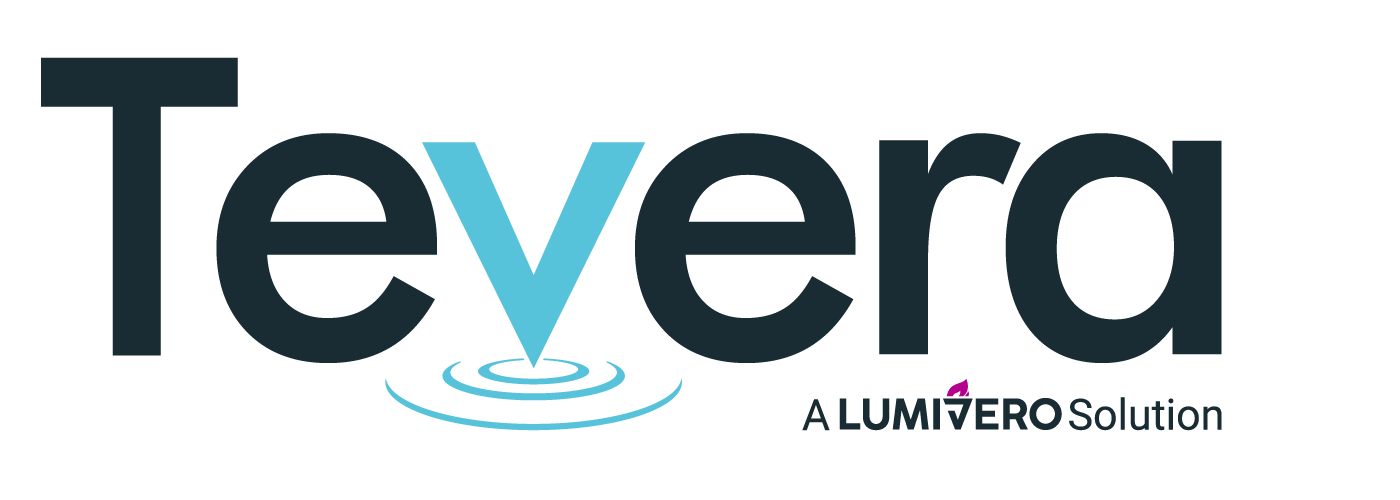AACSB Accreditation Requirements and Standards
The Association to Advance Collegiate Schools of Business (AACSB) has represented the highest quality standards in business education worldwide for over a century. This internationally recognized non-profit organization conducts independent reviews and sets standards for business schools across the globe.
Institutions of higher learning with AACSB accreditation make up 5% of the 16,000 business schools worldwide. Those who successfully pass the rigorous accreditation process can rest assured that graduates from their institutions possess the requisite skillsets to perform in their employment environment, theoretically and practically.
What is AACSB Accreditation?
AACSB accreditation is the most highly recognized and specialized accreditation institution any business program can earn. The accreditation process is voluntary, and the AACSB aims to assist institutions in providing the highest quality business education programs through peer review, accountability and improved societal impact, strategic management, thought leadership and learner success.
The process includes a thorough external examination of the institution, including faculty qualifications, curricula, ongoing learning and the continued ability to provide quality education to learners.
The AACSB releases updated business standards annually, accounting for the feedback from deans, assigned committees, accounting program administrators and peer review teams to assist in outlining updates for AACSB guidelines.
Is AACSB Accreditation Important?
The short answer is yes. With the AACSB, businesses, educators and students form a connection and share a common goal — to improve the quality of business education, serve the fluid and ever-changing needs of students and educators, foster diversity and inclusivity, and produce meaningful leadership candidates for the next generation.
Accredited programs can provide faculty and students with quality assurance, which speaks to the highly recognized value that accreditation means for a business program in the business sector and academic communities.
So, how important is AACSB accreditation? AACSB accreditation standards are the highest in the world. These standards are under constant internal and external review and provide institutions and business programs with an endorsement that elevates student, graduate and business program opportunities alike.
AACSB Standards Focus on Three Key Areas:
Strategic management and innovation
Learner success and thought leadership
Engagement and societal impact
AACSB Accreditation Requirements and Standards
To ensure ongoing quality and improvement, the AACSB accreditation requirements are rigorous and detailed, and business programs must undergo extensive qualification procedures to meet AACSB accreditation standards. AACSB standards focus on three key areas — strategic management and innovation, learner success and thought leadership, and engagement and societal impact.
Within these areas, business programs have to meet nine requirements as follows:
- Strategic planning: Institutions have a focused mission and well-documented strategic plan developed through a robust and collaborative process and regularly monitor this process against these standards. They must show innovation, a commitment to continuous improvement and quantifiable societal impact.
- Physical, virtual and financial resources: Schools should manage resources on an ongoing basis to sustain the programs and promote a high-quality environment geared toward student success. Resources must include physical items such as buildings, technology infrastructure and funding oversight.
- Faculty and professional staff resources: Faculty must demonstrate meaningful academic and professional engagement and excellent qualifications. They must participate in and support the program on an ongoing basis. The institution maintains management and support for faculty and professional staff and provides ongoing learning and platforms for career growth.
- Curriculum: Educational content must be innovative, consistent with the institution’s mission and strategies, and aligned with the program’s competency goals. The curriculum promotes innovation and experiential learning to ensure graduates are contributing members of the business community, and the institution manages its curriculum through ongoing assessment and review processes.
- Assurance of learning: Stringent measures are in place to ensure students meet learning outcomes, including quality assurance of degree programs and continuing curricular and processing improvements. This involves continued reporting procedures throughout the institution.
- Learner progression: The institution provides adequate support for career development aligned with its mission and expected outcomes. It champions advancement toward degree completion and post-graduate success and regularly promotes these in the public sphere.
- Teaching effectiveness and impact: The school has a multifaceted and systematic process to ensure quality teaching and learner success. Development activities are in place to augment faculty teaching and provide an innovative program aligned with competency goals. Learner success and satisfaction are indicators of teaching impact.
- Impact of scholarship: Collaborative faculty and academic professionals produce impactful and high-quality intellectual contributions, developed over time into mission-consistent areas of thought leadership throughout the institution. The portfolio of scholarly contributions has a positive societal impact.
- Engagement and societal impact: The institution creates initiatives and engages in activities relevant to its mission that demonstrate positive societal impact.
How Tevera Helps Programs Earn and Maintain AACSB Accreditation
Streamline the accreditation process and simplify reporting procedures for AACSB accreditation with assistance from Tevera. Tevera helps institutions of higher education with their accreditation processes using some of the following methods:
- Providing meaningful and actionable insights: You can manage key assessment outcomes throughout your entire program and track and capture data to open accessible insights for continued program development. You have a centralized hub for storing meaningful data, allowing for rapid and detailed report generation.
- Driving program excellence: Elevated insights allow your institution to strive for better results by focusing on program and site performance and driving program outcomes with student success in mind. You can use your data to increase potential funding and innovation opportunities.
- Streamlining your program’s outcomes management: Ease cumbersome administrative practices with Tevera’s outcome management solutions, providing value across institutions for students, faculty and stakeholders.
- Simplifying standards management: Deliver rubrics across multiple standard sets, including institutional accreditation standards, and report on data based on your key assignment, tracks, field experience, forms and rubrics to display support and maintain accreditation requirements.
- Elevating student excellence: Follow student progress and ensure they’re meeting program standards with enhanced visibility into program outcomes and relevant insights to identify areas to innovate learning materials and delivery.
- Simplifying the reporting process: Tevera aggregates in one central hub, allowing you to simplify your documentation and streamline the accreditation process.
- Integrating technologies: You can integrate Tevera with your core IT and learning management systems to align with course sections and goal-based outcome management.
AACSB Accreditation Reporting
The AACSB requires higher learning institutions to maintain regulatory and compliance standards with diligent and detailed reporting processes. Reporting ensures schools meet the highest education, curricular, research and student outcomes success and that their missions remain aligned with ongoing learning and innovative strategies.
Reporting serves to ensure institutions continue to meet the AACSB standards and requirements. Students, faculty, administrators and stakeholders are all considered part of the reporting process. Reporting is designed to ensure students meet the required benchmarks in their learning journey and identify areas needing improvement in the continued quest for diversity and excellence.
Providing reports to meet AACSB accreditation standards requires detailed and powerful reporting solutions, allowing both the accrediting body and the institution to benefit from the insights and create lasting and actionable solutions.
Simplify AACSB Accreditation With Tevera
AACSB standards are some of the most challenging to meet in higher education, but it is vital for the institution’s credibility. Their focus is on creating institutions of the highest quality, ensuring students graduate with theoretical knowledge and practical expertise to become successful business leaders and innovators with a learning mindset for the rest of their careers.
With Tevera, you can improve accreditation reporting and maintain accreditation status using simple solutions that will enhance the process for all stakeholders. Education is focused on student outcomes, and Tevera believes in creating EdTech solutions where both programs and students thrive, maintaining ongoing learning and insightful data collection with one multipurpose solution.
Schedule an overview today and learn more about how Tevera can help you achieve accreditation.
Interested in Learning About Other Accreditation Bodies Tevera Supports?
SOLUTIONS
RELATED POSTS
PRODUCT OVERVIEW
See how Tevera can elevate your program.
AACSB Accreditation Requirements and Standards
The Association to Advance Collegiate Schools of Business (AACSB) has represented the highest quality standards in business education worldwide for over a century. This internationally recognized non-profit organization conducts independent reviews and sets standards for business schools across the globe.
Institutions of higher learning with AACSB accreditation make up 5% of the 16,000 business schools worldwide. Those who successfully pass the rigorous accreditation process can rest assured that graduates from their institutions possess the requisite skillsets to perform in their employment environment, theoretically and practically.
What is AACSB Accreditation?
AACSB accreditation is the most highly recognized and specialized accreditation institution any business program can earn. The accreditation process is voluntary, and the AACSB aims to assist institutions in providing the highest quality business education programs through peer review, accountability and improved societal impact, strategic management, thought leadership and learner success.
The process includes a thorough external examination of the institution, including faculty qualifications, curricula, ongoing learning and the continued ability to provide quality education to learners.
The AACSB releases updated business standards annually, accounting for the feedback from deans, assigned committees, accounting program administrators and peer review teams to assist in outlining updates for AACSB guidelines.
Is AACSB Accreditation Important?
The short answer is yes. With the AACSB, businesses, educators and students form a connection and share a common goal — to improve the quality of business education, serve the fluid and ever-changing needs of students and educators, foster diversity and inclusivity, and produce meaningful leadership candidates for the next generation.
Accredited programs can provide faculty and students with quality assurance, which speaks to the highly recognized value that accreditation means for a business program in the business sector and academic communities.
So, how important is AACSB accreditation? AACSB accreditation standards are the highest in the world. These standards are under constant internal and external review and provide institutions and business programs with an endorsement that elevates student, graduate and business program opportunities alike.
AACSB Standards Focus on Three Key Areas:
Strategic management and innovation
Learner success and thought leadership
Engagement and societal impact
AACSB Accreditation Requirements and Standards
To ensure ongoing quality and improvement, the AACSB accreditation requirements are rigorous and detailed, and business programs must undergo extensive qualification procedures to meet AACSB accreditation standards. AACSB standards focus on three key areas — strategic management and innovation, learner success and thought leadership, and engagement and societal impact.
Within these areas, business programs have to meet nine requirements as follows:
- Strategic planning: Institutions have a focused mission and well-documented strategic plan developed through a robust and collaborative process and regularly monitor this process against these standards. They must show innovation, a commitment to continuous improvement and quantifiable societal impact.
- Physical, virtual and financial resources: Schools should manage resources on an ongoing basis to sustain the programs and promote a high-quality environment geared toward student success. Resources must include physical items such as buildings, technology infrastructure and funding oversight.
- Faculty and professional staff resources: Faculty must demonstrate meaningful academic and professional engagement and excellent qualifications. They must participate in and support the program on an ongoing basis. The institution maintains management and support for faculty and professional staff and provides ongoing learning and platforms for career growth.
- Curriculum: Educational content must be innovative, consistent with the institution’s mission and strategies, and aligned with the program’s competency goals. The curriculum promotes innovation and experiential learning to ensure graduates are contributing members of the business community, and the institution manages its curriculum through ongoing assessment and review processes.
- Assurance of learning: Stringent measures are in place to ensure students meet learning outcomes, including quality assurance of degree programs and continuing curricular and processing improvements. This involves continued reporting procedures throughout the institution.
- Learner progression: The institution provides adequate support for career development aligned with its mission and expected outcomes. It champions advancement toward degree completion and post-graduate success and regularly promotes these in the public sphere.
- Teaching effectiveness and impact: The school has a multifaceted and systematic process to ensure quality teaching and learner success. Development activities are in place to augment faculty teaching and provide an innovative program aligned with competency goals. Learner success and satisfaction are indicators of teaching impact.
- Impact of scholarship: Collaborative faculty and academic professionals produce impactful and high-quality intellectual contributions, developed over time into mission-consistent areas of thought leadership throughout the institution. The portfolio of scholarly contributions has a positive societal impact.
- Engagement and societal impact: The institution creates initiatives and engages in activities relevant to its mission that demonstrate positive societal impact.
How Tevera Helps Programs Earn and Maintain AACSB Accreditation
Streamline the accreditation process and simplify reporting procedures for AACSB accreditation with assistance from Tevera. Tevera helps institutions of higher education with their accreditation processes using some of the following methods:
- Providing meaningful and actionable insights: You can manage key assessment outcomes throughout your entire program and track and capture data to open accessible insights for continued program development. You have a centralized hub for storing meaningful data, allowing for rapid and detailed report generation.
- Driving program excellence: Elevated insights allow your institution to strive for better results by focusing on program and site performance and driving program outcomes with student success in mind. You can use your data to increase potential funding and innovation opportunities.
- Streamlining your program’s outcomes management: Ease cumbersome administrative practices with Tevera’s outcome management solutions, providing value across institutions for students, faculty and stakeholders.
- Simplifying standards management: Deliver rubrics across multiple standard sets, including institutional accreditation standards, and report on data based on your key assignment, tracks, field experience, forms and rubrics to display support and maintain accreditation requirements.
- Elevating student excellence: Follow student progress and ensure they’re meeting program standards with enhanced visibility into program outcomes and relevant insights to identify areas to innovate learning materials and delivery.
- Simplifying the reporting process: Tevera aggregates in one central hub, allowing you to simplify your documentation and streamline the accreditation process.
- Integrating technologies: You can integrate Tevera with your core IT and learning management systems to align with course sections and goal-based outcome management.
AACSB Accreditation Reporting
The AACSB requires higher learning institutions to maintain regulatory and compliance standards with diligent and detailed reporting processes. Reporting ensures schools meet the highest education, curricular, research and student outcomes success and that their missions remain aligned with ongoing learning and innovative strategies.
Reporting serves to ensure institutions continue to meet the AACSB standards and requirements. Students, faculty, administrators and stakeholders are all considered part of the reporting process. Reporting is designed to ensure students meet the required benchmarks in their learning journey and identify areas needing improvement in the continued quest for diversity and excellence.
Providing reports to meet AACSB accreditation standards requires detailed and powerful reporting solutions, allowing both the accrediting body and the institution to benefit from the insights and create lasting and actionable solutions.
Simplify AACSB Accreditation With Tevera
AACSB standards are some of the most challenging to meet in higher education, but it is vital for the institution’s credibility. Their focus is on creating institutions of the highest quality, ensuring students graduate with theoretical knowledge and practical expertise to become successful business leaders and innovators with a learning mindset for the rest of their careers.
With Tevera, you can improve accreditation reporting and maintain accreditation status using simple solutions that will enhance the process for all stakeholders. Education is focused on student outcomes, and Tevera believes in creating EdTech solutions where both programs and students thrive, maintaining ongoing learning and insightful data collection with one multipurpose solution.
Schedule an overview today and learn more about how Tevera can help you achieve accreditation.
Interested in Learning About Other Accreditation Bodies Tevera Supports?
AACSB Accreditation Requirements and Standards
The Association to Advance Collegiate Schools of Business (AACSB) has represented the highest quality standards in business education worldwide for over a century. This internationally recognized non-profit organization conducts independent reviews and sets standards for business schools across the globe.
Institutions of higher learning with AACSB accreditation make up 5% of the 16,000 business schools worldwide. Those who successfully pass the rigorous accreditation process can rest assured that graduates from their institutions possess the requisite skillsets to perform in their employment environment, theoretically and practically.
What is AACSB Accreditation?
AACSB accreditation is the most highly recognized and specialized accreditation institution any business program can earn. The accreditation process is voluntary, and the AACSB aims to assist institutions in providing the highest quality business education programs through peer review, accountability and improved societal impact, strategic management, thought leadership and learner success.
The process includes a thorough external examination of the institution, including faculty qualifications, curricula, ongoing learning and the continued ability to provide quality education to learners.
The AACSB releases updated business standards annually, accounting for the feedback from deans, assigned committees, accounting program administrators and peer review teams to assist in outlining updates for AACSB guidelines.
Is AACSB Accreditation Important?
The short answer is yes. With the AACSB, businesses, educators and students form a connection and share a common goal — to improve the quality of business education, serve the fluid and ever-changing needs of students and educators, foster diversity and inclusivity, and produce meaningful leadership candidates for the next generation.
Accredited programs can provide faculty and students with quality assurance, which speaks to the highly recognized value that accreditation means for a business program in the business sector and academic communities.
So, how important is AACSB accreditation? AACSB accreditation standards are the highest in the world. These standards are under constant internal and external review and provide institutions and business programs with an endorsement that elevates student, graduate and business program opportunities alike.
AACSB Standards Focus on Three Key Areas:
Strategic management and innovation
Learner success and thought leadership
Engagement and societal impact
AACSB Accreditation Requirements and Standards
To ensure ongoing quality and improvement, the AACSB accreditation requirements are rigorous and detailed, and business programs must undergo extensive qualification procedures to meet AACSB accreditation standards. AACSB standards focus on three key areas — strategic management and innovation, learner success and thought leadership, and engagement and societal impact.
Within these areas, business programs have to meet nine requirements as follows:
- Strategic planning: Institutions have a focused mission and well-documented strategic plan developed through a robust and collaborative process and regularly monitor this process against these standards. They must show innovation, a commitment to continuous improvement and quantifiable societal impact.
- Physical, virtual and financial resources: Schools should manage resources on an ongoing basis to sustain the programs and promote a high-quality environment geared toward student success. Resources must include physical items such as buildings, technology infrastructure and funding oversight.
- Faculty and professional staff resources: Faculty must demonstrate meaningful academic and professional engagement and excellent qualifications. They must participate in and support the program on an ongoing basis. The institution maintains management and support for faculty and professional staff and provides ongoing learning and platforms for career growth.
- Curriculum: Educational content must be innovative, consistent with the institution’s mission and strategies, and aligned with the program’s competency goals. The curriculum promotes innovation and experiential learning to ensure graduates are contributing members of the business community, and the institution manages its curriculum through ongoing assessment and review processes.
- Assurance of learning: Stringent measures are in place to ensure students meet learning outcomes, including quality assurance of degree programs and continuing curricular and processing improvements. This involves continued reporting procedures throughout the institution.
- Learner progression: The institution provides adequate support for career development aligned with its mission and expected outcomes. It champions advancement toward degree completion and post-graduate success and regularly promotes these in the public sphere.
- Teaching effectiveness and impact: The school has a multifaceted and systematic process to ensure quality teaching and learner success. Development activities are in place to augment faculty teaching and provide an innovative program aligned with competency goals. Learner success and satisfaction are indicators of teaching impact.
- Impact of scholarship: Collaborative faculty and academic professionals produce impactful and high-quality intellectual contributions, developed over time into mission-consistent areas of thought leadership throughout the institution. The portfolio of scholarly contributions has a positive societal impact.
- Engagement and societal impact: The institution creates initiatives and engages in activities relevant to its mission that demonstrate positive societal impact.
How Tevera Helps Programs Earn and Maintain AACSB Accreditation
Streamline the accreditation process and simplify reporting procedures for AACSB accreditation with assistance from Tevera. Tevera helps institutions of higher education with their accreditation processes using some of the following methods:
- Providing meaningful and actionable insights: You can manage key assessment outcomes throughout your entire program and track and capture data to open accessible insights for continued program development. You have a centralized hub for storing meaningful data, allowing for rapid and detailed report generation.
- Driving program excellence: Elevated insights allow your institution to strive for better results by focusing on program and site performance and driving program outcomes with student success in mind. You can use your data to increase potential funding and innovation opportunities.
- Streamlining your program’s outcomes management: Ease cumbersome administrative practices with Tevera’s outcome management solutions, providing value across institutions for students, faculty and stakeholders.
- Simplifying standards management: Deliver rubrics across multiple standard sets, including institutional accreditation standards, and report on data based on your key assignment, tracks, field experience, forms and rubrics to display support and maintain accreditation requirements.
- Elevating student excellence: Follow student progress and ensure they’re meeting program standards with enhanced visibility into program outcomes and relevant insights to identify areas to innovate learning materials and delivery.
- Simplifying the reporting process: Tevera aggregates in one central hub, allowing you to simplify your documentation and streamline the accreditation process.
- Integrating technologies: You can integrate Tevera with your core IT and learning management systems to align with course sections and goal-based outcome management.
AACSB Accreditation Reporting
The AACSB requires higher learning institutions to maintain regulatory and compliance standards with diligent and detailed reporting processes. Reporting ensures schools meet the highest education, curricular, research and student outcomes success and that their missions remain aligned with ongoing learning and innovative strategies.
Reporting serves to ensure institutions continue to meet the AACSB standards and requirements. Students, faculty, administrators and stakeholders are all considered part of the reporting process. Reporting is designed to ensure students meet the required benchmarks in their learning journey and identify areas needing improvement in the continued quest for diversity and excellence.
Providing reports to meet AACSB accreditation standards requires detailed and powerful reporting solutions, allowing both the accrediting body and the institution to benefit from the insights and create lasting and actionable solutions.
Simplify AACSB Accreditation With Tevera
AACSB standards are some of the most challenging to meet in higher education, but it is vital for the institution’s credibility. Their focus is on creating institutions of the highest quality, ensuring students graduate with theoretical knowledge and practical expertise to become successful business leaders and innovators with a learning mindset for the rest of their careers.
With Tevera, you can improve accreditation reporting and maintain accreditation status using simple solutions that will enhance the process for all stakeholders. Education is focused on student outcomes, and Tevera believes in creating EdTech solutions where both programs and students thrive, maintaining ongoing learning and insightful data collection with one multipurpose solution.
Schedule an overview today and learn more about how Tevera can help you achieve accreditation.





















